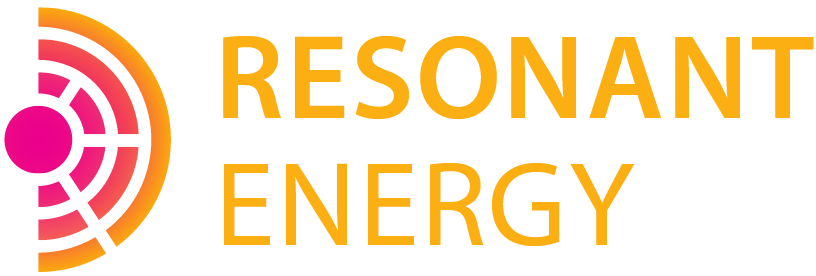Resonant Energy’s Recommendation for the Future of Massachusetts Solar Incentives
By Ben Underwood and Rachel Gentile
The first iteration of the Solar Massachusetts Renewable Target (SMART) program is ramping down, and the Department of Energy Resources (DOER) is currently soliciting comments from industry stakeholders to inform the program’s successor. This is an excellent opportunity for DOER to address some of the shortcomings of SMART and its predecessor SREC, primarily the insufficient incentives for low-income solar which have failed to spur widespread adoption.
Of 478 MW of small (<25 kW AC) systems enrolled in the SMART Program to date, only 21 MW or 4.4% are Low-Income Solar Tariff Generation Units (LI STGU). For context, roughly 34% of households in the state have incomes below $50,000 and would likely qualify as Low-Income Customers under current SMART guidelines. The vast majority of program participants are owners of non-low-income systems. Because of the program’s “declining block” structure, whereby the value of incentives decrease as more participants enroll in the program, this has decreased the SMART value available to LI STGUs without proportionately benefitting low-income customers.
Ensuring equity in the clean energy transition is critical. Low-income neighborhoods have historically been the target of predatory energy suppliers and many of these residents already face a high energy burden. To ensure that more low-income residents can participate in the clean energy transition, Resonant Energy submitted the following recommendations to the DOER.
1. Resetting Compensation Rates
The compensation rate for Low-Income Solar Tariff Generation Units (LI STGUs) should be reset to a minimum of $0.40/kWh to provide a stable and effective incentive for low-income participation. This rate should be exempt from the program's declining block values to ensure long-term benefits and accessibility for these customers.
2. Enhancing Consumer Protection
To protect low-income consumers, we’re advocating for a guaranteed 10% annual bill savings for participants in third-party-owned systems. These savings should be guaranteed for the full contract term, typically 20 - 25 years. We believe these changes would make solar investments both safer and more appealing to low-income households.
3. Expanding Eligibility Definitions
We recommend that the DOER expands the definitions for LI STGUs and Low-Income Property Solar Tariff Generation Units (LIP STGUs) to more accurately reflect the diverse sources of affordable housing that exist across the Commonwealth: The definition of LI STGU should be expanded to include any small property that cannot host more than 25 kW of capacity so long as it meets the other qualification requirements of a LIP STGU. And the definition of LIP STGUs should be expanded to include any system with a rated capacity greater than 25 kW that provides all of its generation output in the form of electricity or bill credits to:
low or moderate-income housing, as defined under M.G.L. c. 40B
condominiums that are deed-restricted to provide low-income home ownership or rental opportunities
homeless shelters
a residential rental building that participates in a covered housing program as defined in section 41411(a) of the Violence Against Women Act of 1994 (34 U.S.C. 12491(a)(3)
a housing assistance program administered by the Department of Agriculture under title V of the Housing Act of 1949
a housing program administered by a Tribally designated housing entity as defined in section 4(22) of the Native American Housing Assistance and Self-Determination Act of 1996 (25 U.S.C. 4103(22)
Other affordable housing programs as the DOER may see fit
Not only would these changes allow more types of affordable housing to be covered under the SMART successor program but it would also align the state definition of “low-income property” with the definitions used under the federal Inflation Reduction Act. This would help reduce complexity for low-income housing providers and help ensure that more low-income solar can be built in Massachusetts.
4. Streamlining the Allocation of Benefits with Electric Distribution Companies (EDCs)
We recommend requiring EDCs to share lists of meter numbers associated with low-income properties with owners of eligible low-income solar arrays. These low-income systems should further be enabled to allocate credits using meter numbers instead of utility account numbers, thereby reducing the administrative burden of updating those numbers when a tenant moves. If credits are allocated to a meter associated with a low-income restricted unit, the system owner only needs to assign the credits once.
Lastly, the DOER should allow LISTGUs to be sized according to the total usage of multifamily properties so long as they allocate a minimum benefit to each tenant, therefore eliminating the need for these systems to restrict their size to common area usage, and making the most of available roof space.
Implications and Impact
Implementing these recommendations has the potential to significantly impact low-income communities, reducing energy burdens and increasing participation in solar energy programs. This approach not only addresses immediate equity concerns but also contributes to Massachusetts' broader sustainability and climate goals. The movement towards equitable solar energy in Massachusetts is more than a policy shift; it's a commitment to justice, sustainability, and community empowerment. By prioritizing inclusivity and equity in solar energy access, the state can serve as a model for others, demonstrating that the transition to renewable energy can and should benefit everyone. We welcome input from you, our community, on how our recommendations could be improved. And we would love your help if you would like to join us in advocating for the speedy adoption of these improvements. Together, we can light the way to a brighter, more sustainable future for all Massachusetts residents.
Suggestions or feedback can be sent to info@resonant.energy
